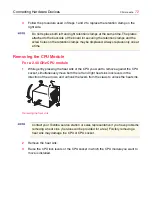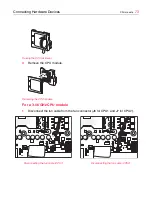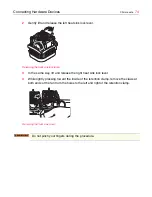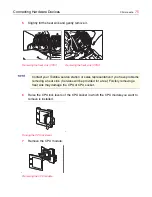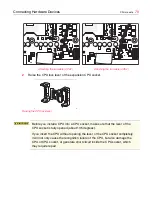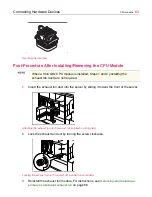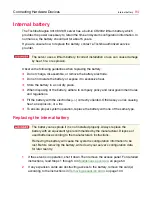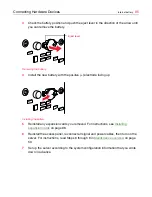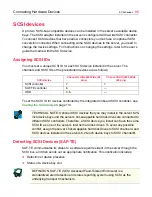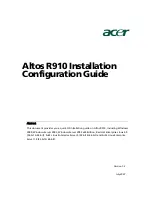
Connecting Hardware Devices
SCSI devices
86
SCSI devices
Up to two SCSI-bus-compatible devices can be installed in the server’s available device
bays. The SCSI adapter installed in the server is configured with a wide SCSI connector.
To connect SCSI devices that have narrow connectors you must use an optional SCSI
conversion connector. When connecting some SCSI devices to the server, you need to
change the device settings. For instructions on changing the settings, refer to the user’s
guide that came with the SCSI device.
Assigning SCSI IDs
You must set a unique SCSI ID for each SCSI device installed in the server. The
channels and SCSI IDs of the preinstalled devices are as follows:
To set the SCSI ID for devices controlled by the integrated onboard SCSI controller, see
Starting the SCSI Utility
on page 114.
Detecting SCSI Devices (SAF-TE)
SAF-TE communicates its status to a software agent resident in the server through the
SCSI bus, and then sends out an appropriate notification. This notification includes:
❖
Detection of device presence
❖
Status of a device bay slot
SCSI device
Channel A Ultra320 Wide (68
pins)
Channel B Ultra320 Wide
(68 pins)
SCSI controller
7
7
SAF-TE controller
6
—
HDD
0-5
—
TECHNICAL NOTE: Optional SCSI devices that you may install in the server 5.25-
inch device bays and the server’s hot-swappable hard disk drives are connected to
different SCSI controllers. Therefore, a SCSI device you install can have the same
SCSI ID as one of the server’s internal hard disk drives. To avoid any possible
conflict, assign the server’s hot-swappable hard disk drives to SCSI channel A and
SCSI devices installed in the server’s 5.25-inch device bays to SCSI channel B.
DEFINITION: SAF-TE (SCSI Accessed Fault-Tolerant Enclosure) is a
standardized alert detection and status reporting system using SCSI as the
underlying transport mechanism.
Содержание Magnia 3310
Страница 1: ......

